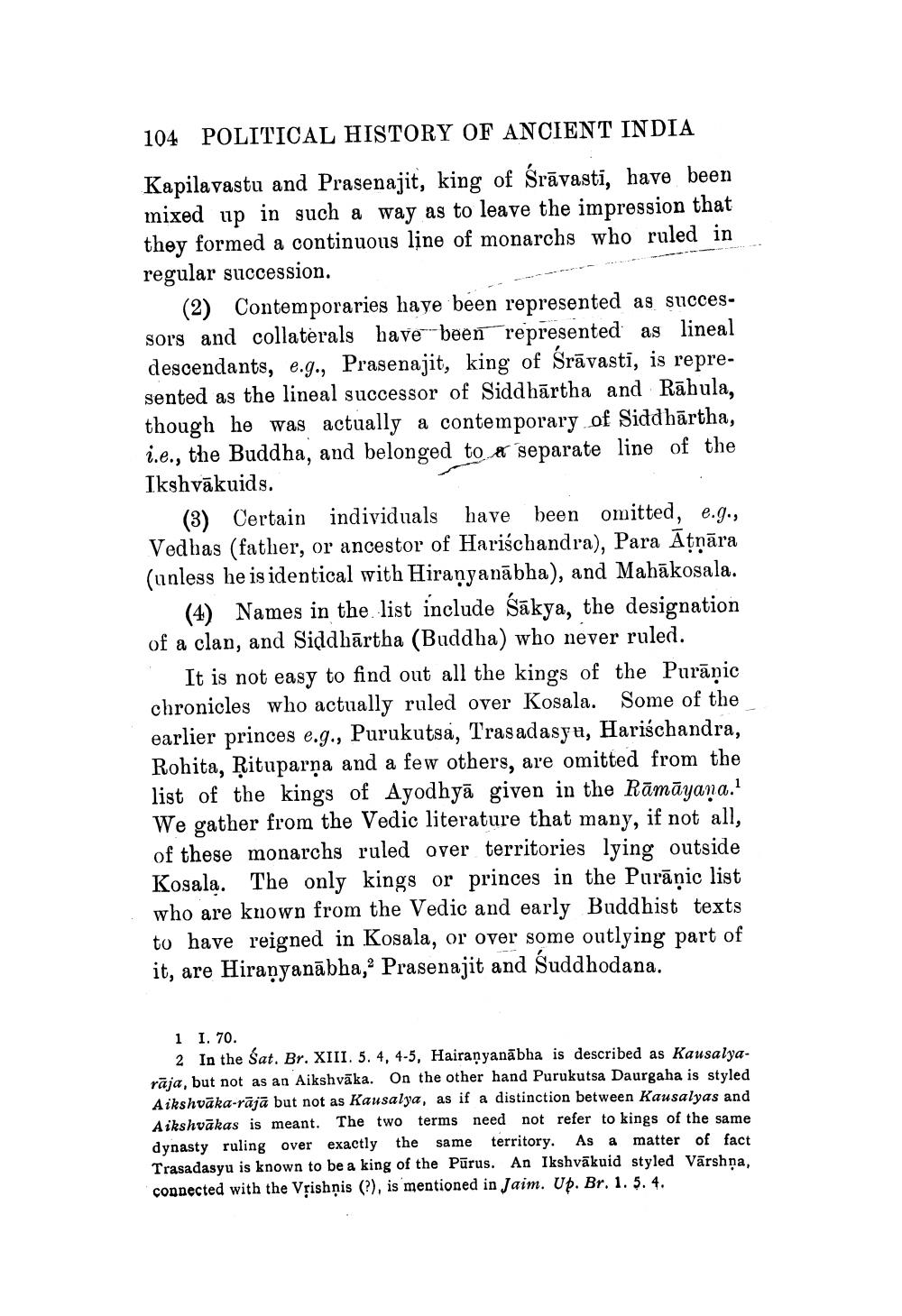________________
shvakuids.
104 POLITICAL HISTORY OF ANCIENT INDIA Kapilavastu and Prasenajit, king of Śrāvasti, have been mixed up in such a way as to leave the impression that they formed a continuous line of monarchs who ruled in regular succession.
(2) Contemporaries haye been represented as successors and collaterals have been represented as lineal descendants, e.g., Prasenajit, king of Srāvastī, is represented as the lineal successor of Siddhārtha and Rāhula, though he was actually a contemporary of Siddhārtha, i.e., the Buddha, and belonged to a separate line of the Ikshvākuids.
(3) Certain individuals have been omitted, e.g., Vedhas (father, or ancestor of Hariśchandra), Para Āțnāra (unless he is identical with Hiranyanābha), and Mahākosala.
(4) Names in the list include śākya, the designation of a clan, and Siddhārtha (Buddha) who never ruled.
It is not easy to find out all the kings of the Purāṇic chronicles who actually ruled over Kosala. Some of the earlier princes e.g., Purukutsa, Trasadasyu, Hariśchandra, Rohita, Rituparņa and a few others, are omitted from the list of the kings of Ayodhyā given in the Rāmāyana.' We gather from the Vedic literature that many, if not all, of these monarchs ruled over territories lying outside Kosala. The only kings or princes in the Purāṇic list who are known from the Vedic and early Buddhist texts to have reigned in Kosala, or over some outlying part of it, are Hiraṇyanābha, Prasenajit and Suddhodana.
1 I. 70.
2 In the Sat. Br. XIII. 5. 4, 4-5, Hairaṇyanābha is described as Kausalyarāja, but not as an Aikshvāka. On the other hand Purukutsa Daurgaha is styled Aikshvāka-rājā but not as Kausalya, as if a distinction between Kausalyas and Aikshvākas is meant. The two terms need not refer to kings of the same dynasty ruling over exactly the same territory. As a matter of fact Trasadasyu is known to be a king of the Pūrus. An Ikshvākuid styled Vārshņa, connected with the Vțishộis (?), is mentioned in Jaim. Up. Br. 1. 5. 4.




